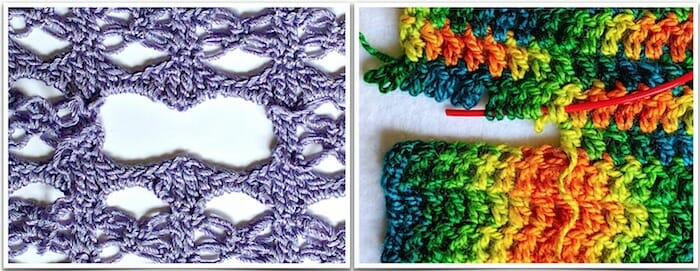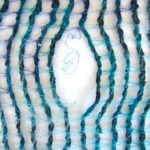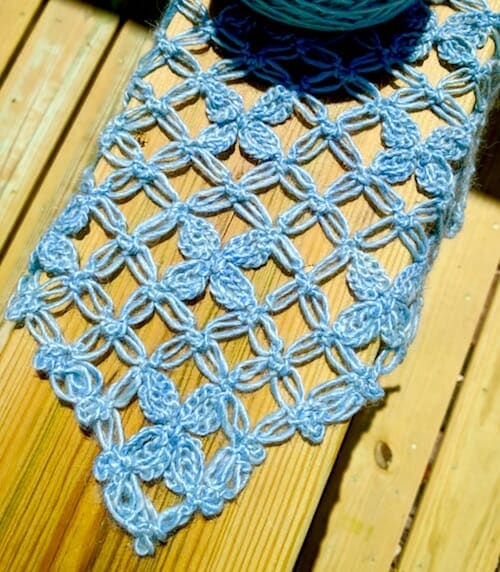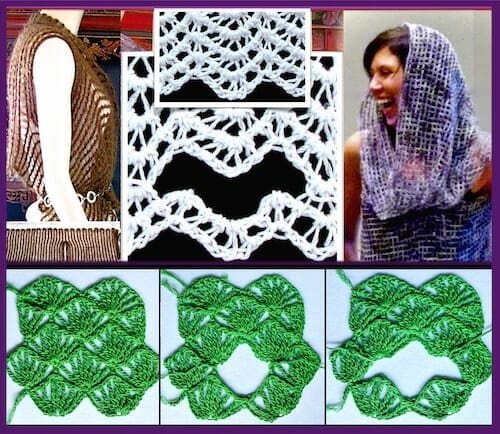
Up to date as of 2/03/2022. This page will likely be updated again before class time and possibly after.
View full size images of steeked swatches.
This page is a conveniently clickable group of things I mention in the Self-Healing Crochet Stitches and How to Cut Them classes. I teach the next one online!—Part One on March 8 & Part Two on 9, 2022—from 10:30am –11:30am CST. I show a lots of published and unpublished designs in this class. Each illustrates the stitches and techniques learned. — Vashti Braha
Considering signing up for this class? Read Why “Self-Healing” Crochet Stitches?
Recommended Articles
- Issue #83, Hidden Pictures in CUT Stitches!
- Issue #79, Joys of Steeking, Ways of Cutting Crochet
- Steeking Crochet: Newsletter Overflow (June 2016)
- Steek Crochet With Pattern Schematics in Any Language (June 2016)
- Reinforcing a Steeked Crochet Hole (June 2016)
- Steeked Crochet Scarf: First Look (June 2016)
- Tunisian Extended Stitch Ripple (May 2016)
- “A Powerful Tunisian Crochet Stitch to Love” (the Tunisian Extended Knit Stitch, Dec. 2011)
Designs & Patterns
- All of Vashti’s steeked crochet projects in Ravelry!
- Mesmer Veils pattern. Smokestack pattern.
- Original post about the Mesmer pattern release.
- Public photo album for the Mesmer and Maze Vest designs.
Steeked Crochet Designs by Others
- Self-updating search results for all steeked crochet patterns in Ravelry (total of 20 as of 2/03/22; was 8 as of 6/1/16).
- Self-updating search results for steeked crochet projects in Ravelry (41 as of 2/03/22; was 13 as of 6/1/16).
Inspiration Boards for this Class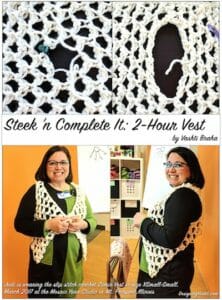
Self-Healing Crochet Stitches and How to Cut Them started out Tunisian-only in 2016. It was originally titled Steek (Cut) Tunisian Crochet Lace for Fun, Fast Fashions. I overhauled the title to help differentiate this topic from steeking knit fair isle sweaters and other traditional reasons for steeks.
Three fashion trends are relevant to this class topic: graphic/linear texture, net lace, and fringe. I’ve created a Pinterest board for each trend.
- Steeks: Ideas These are often simple shapes that become magically wearable and trendy with just a cut or two.
- Trend: the New Fringe I thought today’s fringe was a passing fad but it continues to have a lot of mojo! That’s great for us. Many cut stitch patterns beg to be fringed, especially if you don’t want to use a double-ended hook for Tunisian lace nets. If you cut across several rows, turning that cut edge into fringe is the ideal thing to do with all the ends.
- Trend: Simple Crochet Mesh Nets It’s a classic fabric with fresh boho looks. It’ll be a long-term trend because it’s also now going urbane-futuristic-techie.
- To Try with Tunisian Crochet Nets (linear, visually directional fabric grain as design element)
Cutting self-healing stitch patterns is a unique and fun construction method. Knowing how to easily steek as part of your crochet skillset opens up a whole creative avenue of projects. It’s freeing and empowering. As of 2022, it’s always an option that comes to mind when I’m dreaming up a new design. It goes together with inventive folds and seams I might like to use.
I find it also makes pattern schematics newly inspiring—especially for simple shapes. You might enjoy newsletter #80: Pattern Schematics for Insiders and Outsiders. and its “overflow” blog post, Steek Crochet With Pattern Schematics in Any Language (June 2016).
Any Books on Cutting Crochet?
I’ll add information here as I find it, so please check back. (In 2016 I found nothing in books on specifically steeking Tunisian crochet. (If you know of a source, please leave a comment.)
